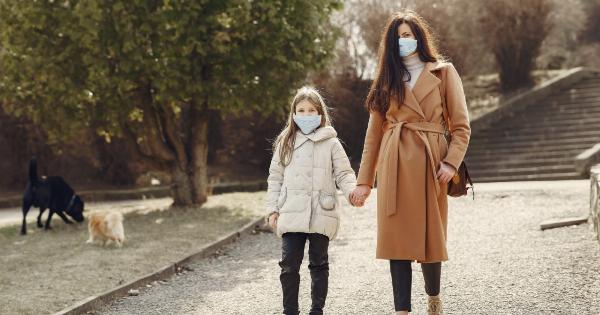Air pollution is a significant global issue that affects the health and well-being of people worldwide.
Far from being purely an environmental problem, air pollution has been linked to a range of health problems, including respiratory diseases, heart conditions, and even cognitive disorders. One particularly alarming effect of air pollution is its impact on pregnancy, with studies increasingly showing that it can lead to premature births.
In fact, air pollution is responsible for millions of premature births each year, creating a concerning public health concern that we need to address.
The link between air pollution and premature births
Researchers have conducted numerous studies over the past decade to explore the relationship between air pollution and premature births. Premature birth, also known as preterm birth, refers to the delivery of a baby before the 37th week of gestation.
Premature babies face a higher risk of health complications, developmental delays, and even death.
According to a study published in the journal Nature Sustainability, air pollution is responsible for approximately 3.4 million premature births worldwide each year.
The study highlighted that exposure to fine particulate matter (PM2.5) and nitrogen dioxide (NO2) increases the risk of premature births. PM2.5 refers to tiny particles suspended in the air, mostly emitted from vehicle exhausts, industrial processes, and power generation. NO2 is a harmful gas produced by burning fossil fuels, particularly in vehicles and power plants.
Another study published in the journal Environmental Health Perspectives found that even short-term exposure to air pollution can increase the risk of preterm birth.
The researchers analyzed data from over 70,000 births and observed a clear correlation between higher levels of air pollution and an increased likelihood of preterm delivery.
The impact on maternal and child health
Premature births have serious implications for both maternal and child health. Mothers who give birth prematurely may experience complications during delivery and face a longer recovery period.
Their babies are also at risk of immediate health problems, such as respiratory distress syndrome, jaundice, and infections. Premature infants often require intensive medical care, including stays in the neonatal intensive care unit (NICU), which can further burden healthcare systems and families.
Air pollution exacerbates these risks by compromising the respiratory and immune systems of pregnant women and their developing fetuses.
Fine particulate matter, for example, can penetrate deep into the lungs and enter the bloodstream, causing inflammation and oxidative stress. These harmful effects increase the likelihood of pregnancy complications and preterm birth.
Furthermore, exposure to air pollution during pregnancy can have long-term consequences for the child’s health.
Several studies have linked in-utero exposure to air pollution with an increased risk of respiratory problems, asthma, cognitive impairments, and even behavioral issues later in life.
High-risk populations
While air pollution affects people of all backgrounds, certain populations are particularly vulnerable to its harmful effects on pregnancy.
In low- and middle-income countries, where air pollution levels tend to be highest, pregnant women often lack access to proper healthcare and may live in areas with high levels of pollution. As a result, the risk of premature birth caused by air pollution is disproportionately higher in these regions.
Moreover, studies have found that pregnant women who live near major roads or industrial areas are at an increased risk of preterm birth due to the constant exposure to traffic-related air pollution.
This highlights the importance of considering environmental justice in addressing the issue of air pollution and premature births, as marginalized communities are often more likely to be exposed to higher pollution levels.
Addressing the issue
Tackling air pollution and its impact on premature births requires a multi-faceted approach involving various stakeholders, including governments, industries, healthcare providers, and individuals.
Here are some key strategies that can help mitigate the problem:.
1. Legislation and regulation
Governments should prioritize the implementation and enforcement of strict air pollution regulations.
This includes setting emission standards for industries, vehicles, and power plants, as well as promoting the use of clean and renewable energy sources.
2. Promoting sustainable transportation
Reducing vehicle emissions is crucial in improving air quality. Governments and urban planners can invest in public transportation systems, encourage walking and cycling, and incentivize the use of electric vehicles.
By reducing the number of cars on the road, we can significantly decrease air pollution levels.
3. Raising awareness
Education plays a vital role in addressing air pollution. Governments, non-profit organizations, and healthcare providers should raise awareness about the health risks associated with air pollution, particularly for pregnant women.
This includes providing information on the importance of proper prenatal care, avoiding exposure to high levels of pollution, and implementing indoor air purification measures.
4. Increasing access to prenatal care
Improving access to quality prenatal healthcare is crucial to detect and address potential complications early on.
Comprehensive prenatal care should include regular check-ups, monitoring of air pollution levels, and guidance on mitigating exposure to polluted environments.
5. Investing in research
Continued research is essential to better understand the specific mechanisms through which air pollution affects pregnancy and to develop effective interventions.
Funding should be allocated to studies investigating the health effects of air pollution, including its impact on pregnancy outcomes and possible preventive measures.
Conclusion
Air pollution is a significant driver of premature births worldwide, posing a substantial threat to maternal and child health. The millions of premature births each year linked to air pollution highlight the urgent need for action.
By implementing strict regulations, promoting sustainable transportation, raising awareness, improving access to prenatal care, and investing in research, we can address the issue at multiple levels. Protecting pregnant women from the harmful effects of air pollution is not only a matter of public health but also a crucial step towards creating a cleaner and healthier environment for generations to come.






























